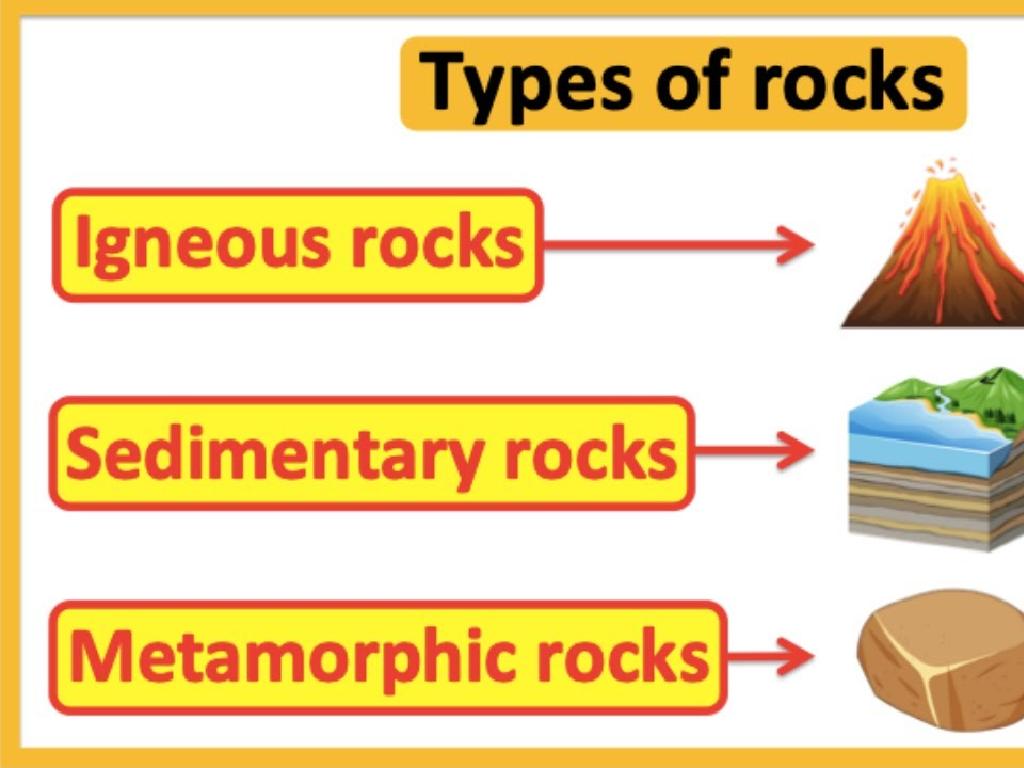Exterior Angle Theorem
Subject: Math
Grade: Eighth grade
Topic: Two-Dimensional Figures
Please LOG IN to download the presentation. Access is available to registered users only.
View More Content
Exploring the Exterior Angle Theorem
– Define Exterior Angle Theorem
– The sum of the remote interior angles equals the exterior angle.
– Angles in 2D figures
– Understand interior vs. exterior angles in polygons.
– Real-life applications
– Used in construction, design, and navigation.
– Solving geometry problems
– Apply theorem to calculate unknown angles.
|
The Exterior Angle Theorem is a fundamental concept in geometry that states the measure of an exterior angle of a triangle is equal to the sum of the measures of the two non-adjacent interior angles. This slide will introduce students to the theorem, help them recognize angles in various two-dimensional figures, and understand its practical applications. For example, architects use this theorem to design structures with specific angular properties. In class, we’ll practice applying the theorem to solve problems, enhancing students’ problem-solving skills and geometric understanding.
Understanding Exterior Angles
– Define an exterior angle
– An angle formed outside parallel lines by a third line that intersects them.
– Compare exterior and interior angles
– Interior angles are inside shapes; exterior angles are outside.
– Create an exterior angle
– Extend one side of a polygon to form the exterior angle.
– Exterior angle theorem
– The measure of an exterior angle equals the sum of the two non-adjacent interior angles.
|
This slide introduces the concept of exterior angles in the context of polygons, particularly triangles. Begin by defining an exterior angle and how it differs from an interior angle. Emphasize that while interior angles are found within the boundaries of a shape, exterior angles are formed by extending a side of the shape. Demonstrate how to create an exterior angle with a visual example, such as extending the side of a triangle. Conclude with the Exterior Angle Theorem, which states that the measure of an exterior angle of a triangle is equal to the sum of the measures of the two non-adjacent interior angles. Provide examples and encourage students to practice creating their own exterior angles by drawing and extending sides of different polygons.
Understanding the Exterior Angle Theorem
– Exterior Angle Theorem explained
– The theorem states that an exterior angle of a triangle equals the sum of the two opposite interior angles.
– Sum of remote interior angles
– If a triangle has angles ‘a’ and ‘b’ as remote interiors, and ‘c’ as the exterior, then a + b = c.
– Exterior angle equals sum
– This is a fundamental property of triangles in geometry, crucial for solving various problems.
– Brief rationale behind theorem
– It’s based on the properties of parallel lines and transversals creating alternate interior angles.
|
The Exterior Angle Theorem is a key concept in understanding triangles and their properties. It states that the measure of an exterior angle of a triangle is equal to the sum of the measures of the two non-adjacent interior angles. This slide will introduce the theorem, provide an equation that students can use to find the value of an exterior angle, and offer a simple explanation of why the theorem is true, based on the principles of parallel lines and transversals. Encourage students to think about how this theorem might apply in real-world situations, such as in architectural design or engineering.
Exploring the Exterior Angle Theorem
– Apply theorem to triangle types
– Whether scalene, isosceles, or equilateral, the theorem holds true.
– Work through a sample problem
– Let’s solve a problem as a class to understand the theorem’s application.
– Theorem’s universal triangle application
– Every triangle’s exterior angle equals the sum of the opposite interior angles.
|
This slide aims to deepen students’ understanding of the Exterior Angle Theorem by applying it to various triangle types. Begin by explaining that the theorem is applicable to all triangles, regardless of their side lengths or angle measures. Then, engage the class in solving a sample problem to demonstrate how the theorem is used in practice. Emphasize that for any triangle, the measure of an exterior angle is equal to the sum of the measures of the two non-adjacent interior angles. This concept is fundamental in geometry and will be useful in solving various problems involving triangles.
Exterior Angle Theorem in Real Life
– Architects’ use of the theorem
– Helps in designing buildings and structures
– Theorem in computer graphics
– Essential for rendering 3D models and animations
– Geometry’s role in daily life
– From art to navigation, geometry shapes our world
|
This slide aims to illustrate the practical applications of the Exterior Angle Theorem beyond the classroom. Architects and engineers apply this theorem in the design and construction of buildings, ensuring structural integrity and aesthetic appeal. In the realm of computer graphics, the theorem is crucial for creating realistic three-dimensional models and animations, which are used in video games, simulations, and movies. Highlighting the significance of geometry in everyday life, from the patterns in art to the calculations in navigation, can help students appreciate the value of mathematical concepts they learn. Encourage students to think of other areas where geometry is essential and to consider how the Exterior Angle Theorem might apply to those situations.
Class Activity: Exterior Angle Theorem
– Receive a worksheet with triangles
– Solve for exterior angles
– Use the theorem: exterior angle = sum of opposite interior angles
– Sketch a triangle and extend a side
– Apply the theorem to your sketch
– Verify the theorem with your own triangle
|
This activity is designed to reinforce the Exterior Angle Theorem through practice and creativity. Distribute worksheets with various triangles to each student. Students will identify the exterior angles and solve for them using the theorem that states an exterior angle is equal to the sum of the two opposite interior angles. Afterward, students will sketch their own triangle, extend one side to create an exterior angle, and then apply the theorem to find its measure. Encourage students to compare their findings with peers. Possible variations for different students could include solving for different types of triangles (isosceles, scalene, etc.), using algebra to represent the interior angles, or challenging them to find a relationship between the exterior angles of a polygon.
Group Challenge: Exterior Angle Theorem
– Form groups to tackle a problem
– Solve for exterior angles
– Use the theorem: exterior angle = sum of opposite interior angles
– Present your findings
– Discuss various solutions
– Compare different methods used by groups
|
This group challenge is designed to foster collaboration and deepen students’ understanding of the Exterior Angle Theorem. Divide the class into small groups and provide them with a complex problem that requires them to apply the theorem. Each group will work together to find the solution and then present their findings to the class. After the presentations, lead a discussion on the different approaches and solutions each group used. This will help students see the theorem from various perspectives and understand that there can be multiple ways to reach the same answer. Encourage students to explain their reasoning and the steps they took to solve the problem. This activity will also enhance their presentation skills and ability to work as a team.
Review & Reflect: Exterior Angle Theorem
– Recap of Exterior Angle Theorem
– Sum of remote interior angles equals the exterior angle.
– Connections to other geometric concepts
– Relates to triangle sum theorem and parallel lines.
– Engage in a Q&A session
– Clarify doubts and solidify understanding
|
Begin with a brief recap of the Exterior Angle Theorem, emphasizing that the measure of an exterior angle of a triangle is equal to the sum of the measures of the two non-adjacent interior angles. Discuss how this theorem is not an isolated concept but is interconnected with other geometric principles, such as the Triangle Sum Theorem and the properties of parallel lines cut by a transversal. The Q&A session is crucial for addressing any lingering uncertainties and ensuring that students can apply the theorem to various problems. Encourage students to ask questions and provide examples for further clarification. This review session is essential for reinforcing their understanding and preparing them for more complex geometric problems.
Homework: Mastering Exterior Angle Theorem
– Practice problems on Exterior Angle Theorem
– Solve assigned problems to reinforce understanding
– Create your own problems for extra credit
– Design unique problems; apply theorem creatively
– Study for a quiz on two-dimensional figures
– Review today’s lesson and previous materials
|
This homework assignment is designed to solidify the students’ understanding of the Exterior Angle Theorem. Encourage them to complete the practice problems and remind them that these exercises will directly support their preparation for the upcoming quiz. Offering extra credit for creating their own problems will motivate them to think critically and apply the theorem in new ways. As they prepare for the quiz, they should revisit not only today’s lesson but also all related topics covered in the unit on two-dimensional figures. Provide them with study tips, such as creating flashcards for key concepts or forming study groups with classmates.






